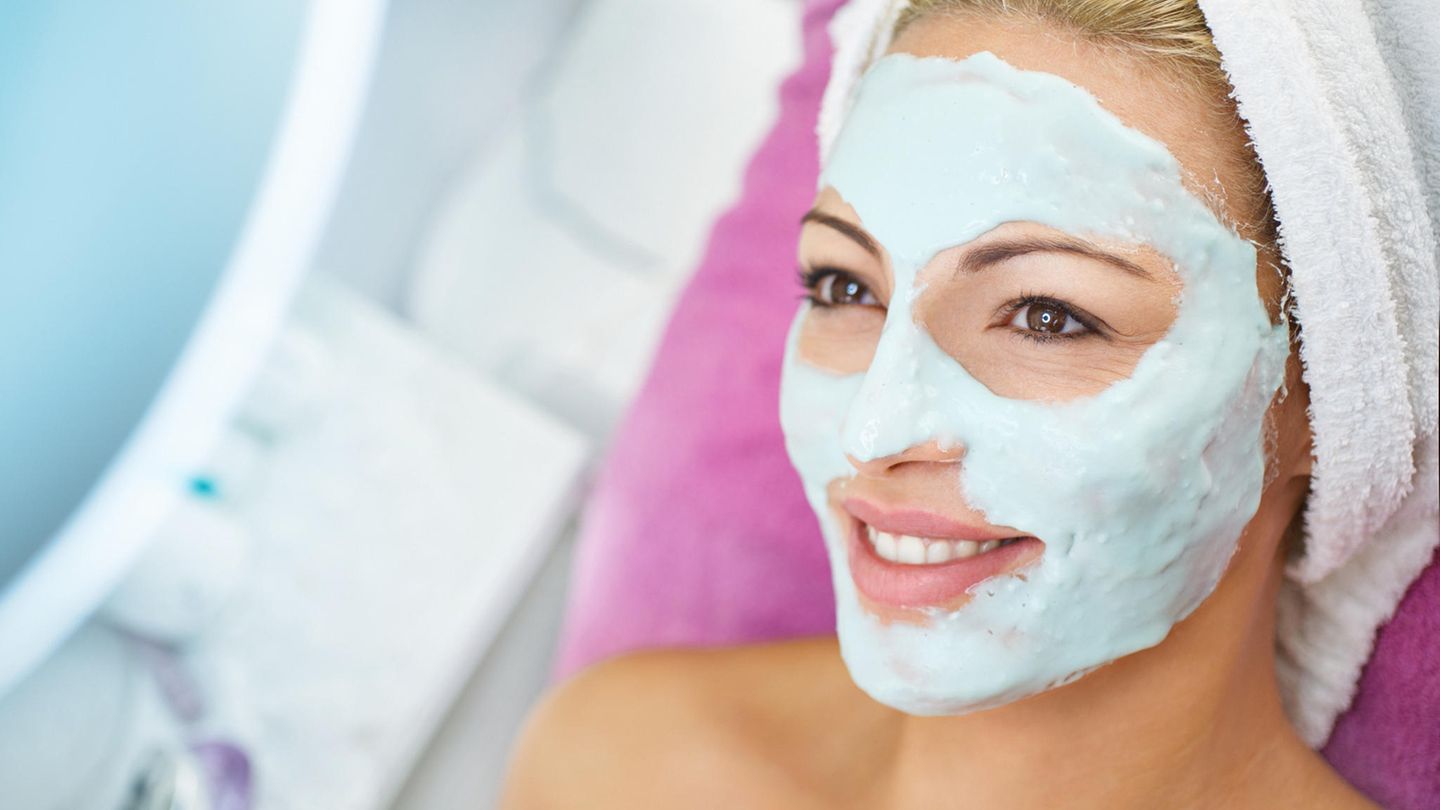Skin care
How useful is a facial peeling? Helpful tips on application and effect
Copy the current link
A peeling primarily serves to remove dead skin cells. Even if the application is very simple, various factors play an important role.
In principle, a facial peeling is suitable for everyone, but the frequency of use should depend on the skin type: Removing the top layer weakens the skin’s natural protective film, making it easy for bacteria. It is all the more important that you do not use facial or body peelings too often. And the right time is also crucial so that your skin can recover from the strain in peace. When and how to use a peeling correctly is explained in this article.
Frequency and timing: This applies to your skin type
In contrast to ordinary care products that you normally use to cleanse your skin every day, a be used sparingly. Depending on your skin type, the following recommendations apply:
|
Skin type |
frequency |
|
Normal skin: |
preferably 1-2 x per week |
|
Impure skin: |
max. 2 x per week |
|
Dry skin: |
only once a week |
|
Sensitive skin: |
better 1-2 times per month |
By mechanically rubbing the skin, part of the stratum corneum is removed. This in turn causes your face to become more sensitive to light over a short period of time. For this reason, it is advisable, regardless of your skin type Always use in the evening instead of in the morning. Then your skin can regenerate overnight.
Improved skin condition: This is how a facial peeling works
The skin’s natural production of sebum, as well as cosmetic products such as face creams and make-up, clog our pores, promoting impurities such as pimples and blackheads. If you have particularly oily skin or are already prone to blemishes, peelings are a good option. to remove. The bottom line is that facial peels:
- Cleanse the skin deep into the pores
- Prevent skin blemishes
- promote blood circulation
- improve the complexion
How to use a facial peel correctly
Since the skin on the face is particularly sensitive, you should only use peelings that are suitable for it. Body scrubs usually contain significantly coarser and larger particles to remove skin impurities on the back. Depending on whether you tend to have dry, oily or sensitive skin, you should consider purchasing one Pay attention to which skin type the product is recommended for – because here too there are fine and coarse peelings (for example ). When using it, proceed as follows:
-
Wash your face thoroughly, preferably with your usual cleansing cream or lotion.
-
Apply the facial peeling in small amounts to the forehead, nose, cheeks and chin.
-
Distribute the fine particles with circular movements from the forehead to the temple.
-
Use your fingertips to gently rub the particles from the bridge of your nose to the tip of your nose.
-
You can intensify the circular movements a little on the edges of your nose.
-
The facial peeling should be gently rubbed over the skin on the cheeks.
-
Gently brush the particles from the cheeks towards the jawbone and chin.
-
Depending on your needs, you can spread the peeling from the chin over the neck to the décolleté.
-
Carefully wash off the particles with warm water and then apply cream to your face.
Make your own facial peeling: This is how it works
If you want to make your own facial peeling, you only need two basic ingredients: a creamy base that spreads easily over the skin and natural peeling particles that provide the necessary abrasion of the top layer. The following ingredients are available as the main components:
-
olive oil
-
Honey
-
quark
-
avocado
-
Coconut oil
Ingredients such as sugar or sea salt, coffee powder, etc. provide the necessary peeling . The amounts should be in a ratio of 1:1, but can vary depending on consistency and personal taste. In any case, it is important that you mix the ingredients together until a homogeneous mass is created. You can then use the homemade facial peeling on your skin as described above.
*This article contains so-called affiliate links to products in online shops. If a user clicks on it and buys something, the publisher receives a commission from the retailer, not the manufacturer. There is more information about this .
Source: Stern
I’m Caroline, a journalist and author for 24 Hours Worlds. I specialize in health-related news and stories, bringing real-world impact to readers across the globe. With my experience in journalism and writing in both print and online formats, I strive to provide reliable information that resonates with audiences from all walks of life.




